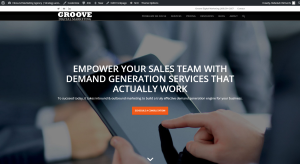While the world’s economy may have largely recovered from the depths of the 2008 recession, there remain growing concerns that its recent growth has been fuelled by heavy consumer borrowing. These are based primarily on the fact that irresponsible lending and reckless spending by consumers also served as a prelude to the previous economic collapse, despite widespread and disproportionate growth being reported across the globe.
So although the S & P Index has risen more than 92% during the last five years, there remain other portents that hint at the onset of a further global recession in 2016. The plethora of recent international government bailouts and rising national debt levels are also huge concerns for industry and political leaders, while the fact remains that business-owners may find it increasingly difficult to fund and sustain their ventures in the year ahead.
3 Creative Methods for Funding your Business in the Year Ahead
While the current economic climate may be less than forgiving, however, business-owners can at least seek solace in a vast and ever-expanding range of creative financing techniques. Historically, entrepreneurs were forced to rely on traditional financing methods such as sourcing a bank loan or borrowing from friends and family, assuming that they were eligible for the former and comfortable with the demands of the latter.
Although bootstrapping, which refers to the process of using personal capital and income streams to finance a business, remains a more viable option in the modern age this is fraught with risk in a volatile economy. As the financial marketplace has responded to change and continued to evolve, however, entrepreneurs can now consider the following solutions to drive their business forward: –
The Concept of Factoring and Invoice Advances
Factoring has emerged as an increasingly popular and flexible funding method for new businesses, especially as the lending criteria for traditional bank loans has become more stringent. Factoring essentially refers to the process of ‘selling’ accounts receivable and billed work to third-party service providers, who front the required capital on a short-term basis. Business-owners then repay this once their own client has settled the bill, enabling start-ups to compete on a more assured footing from the outset.
In terms of core benefits, factoring allows small and fledgling companies to bridge the pay gap between settling billed work and settling supplier and contractor debts. This is a major obstacle to small business growth, as cash-flow can become strained with typical invoice terms stating that payment can be made between 30 and 90 days of receipt.
It is important to have a strict financial structure in place if you are considering this type of financing option, however, as the failure of clients to settle their bills will leave you indebted to third-party vendors. So not only must you establish fixed invoice terms that are clearly communicated to your clients, but it also crucial to ensure that you have ways of pursuing late payments.
Consider the Benefit of Product Presales
For product-orientated firms, the core assets that they intend to sell can be leveraged to create up-front business capital. Product design and development often supersedes the launch of an overarching business, so it is possible to organise presales and raise money for the execution of your commercial plan. This has been done successfully by multiple firms, with Bittylab having famously sold her Bare, air-free baby bottles to pay for inventory and develop infrastructure.
There are also challenges with this, however, such as developing viable channels for presales and coordinating the delivery of stock to fulfil orders. It is therefore a good idea to start small before scaling your presale drive, while pursuing affiliate sales through third-party vendors is also a viable option. This enables you to sell through established retail sites for a fixed percentage commission fee on each unit, while it also exposes your product to a huge, captive audience.
Start a low-cost, Side Business Venture
On a similar note, you may also want to develop a side business venture to raise funds for your company launch. While this may sound overly convoluted, it is an increasingly commonplace business practice that utilises revenue from a simple, low-cost start-up to finance a larger commercial venture. This not only eliminates the need to encumber yourself with personal debt, but it also creates an additional revenue stream that can be sustained indefinitely.
The key is to establish a simple and sustainable side business, and one that minimises start-up costs, overheads and time involvement. Selling affiliate products through a website is a great way of earning commission-based revenue, for example, while developing a personal blog is also relatively cheap and can drive significant income through advertising and content placement.
Regardless of the precise side business that you choose, it is crucial that you focus on models that are easy and time-effective to manage while driving passive income streams that can be easily maintained.
Business & Finance Articles on Business 2 Community(45)






